After a 10-plus-year hiatus from making high-end mountain bike tires, Michelin returned to the World Cup downhill paddock in 2019 with the MS Mondraker Team. Since then, their rubber has seen plenty of success between the tape in various racing disciplines. For 2024, Michelin continues to evolve its premium product offering with the completely revamped Enduro and E-Bike Racing Line tires. Lucky for us, we were able to spend a few days getting acquainted with the new casings, compounds, and tread designs at Ride Rock Creek and Ride Kanuga Bike Parks, which happen to be within an hour from Michelin's North American headquarters in Greenville, South Carolina. Three days and over 40 laps later, we left with a good sense of what the new tires have to offer and where they fit into the current crop of Enduro and E-Bike tires.
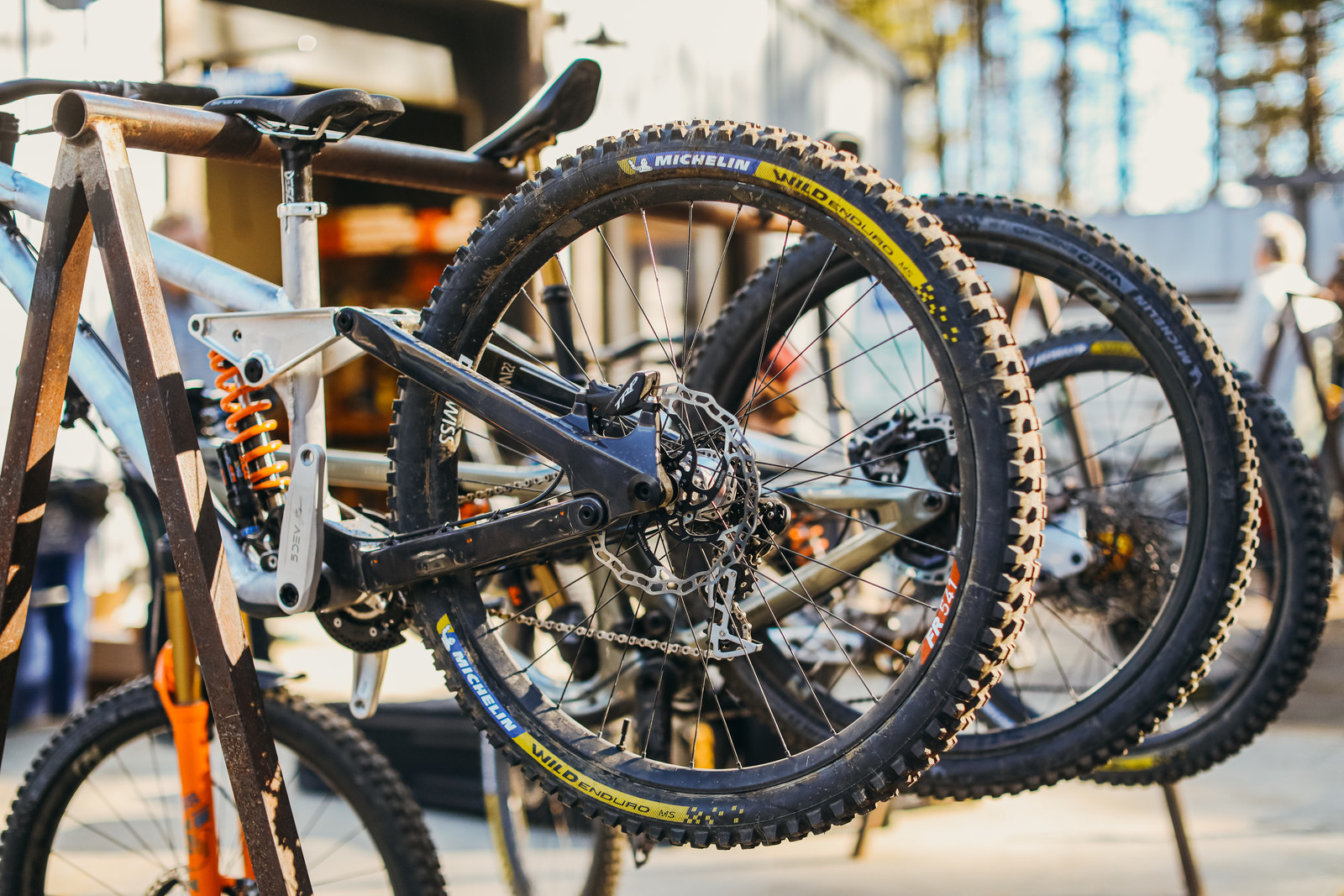
Enduro Wild Racing Line Overview
Michelin has continued to use the "Wild" name for all their all-mountain, enduro, and e-bike tires; however, they now differentiate between the tires with terrain-focused sub-names. The Wild Enduro Racing Line now includes the MS (Mixed-Soft), MH (Mixed-Hard), and Rear models. The MS, MH, and Rear tires have been updated for 2024, and all the tires in the line are E-Bike compatible.

Updates include a revised casing lay-up consisting of a pinch protection layer closest to the bead, two 55 TPI layers, a tread shield layer, and a bead-to-bead shield layer on top. Michelin's Magi-X rubber compound is used throughout to improve grip and rolling speed. The Wild Enduro MS and MH are offered in 27.5 and 29-inch, but surprisingly, the Enduro Rear is only available in 29-inch. The final major update is that the tires will be available in Michelin's signature blue/yellow colors, as well as a more subtle gray to match the colors of more consumer bikes.

We were able to do ten downhill-style runs on the Wild Enduro MS in the front and Wild Enduro MH in the rear. We did not get a chance to test the new Wild Enduro Rear tire since the trails we rode did not lend themselves to needing a fast-rolling tire, but its avaialbe in both color ways in a 29x2.4".
E-Bike Tires Overview
New for this year, Michelin has a few e-bike-specific tires that focus on overall traction, wear life, and managing the weight of heavier bikes. They've done this by building upon the tread pattern of the Wild Enduro MS to create the E Wild Front while developing the all-new E Wild Rear. The E Wild Racing Line uses the same casing layup and structure as the enduro models to ensure maximum support and protection. For the compound, Michelin has used a slightly firmer version of their Magi-X compound to help prevent premature wear.

The E Wild Front is available in 29x2.4 and 29x2.6 options. The E Wild Rear is available in 27.5x2.6 and 29x2.6. However, unlike the Wild Enduro tires, the E Wild Tires are only available in Michelin's blue/yellow colorway. We rode a Specialized Stumpjumper Levo courtesy of Ride Kanuga Bike Park with the E Wild front in 29x2.6 and the E Wild rear in 27.5x2.6.
Trails We Rode and Conditions
Over the course of three days, we were treated to nearly perfect conditions at Ride Rock Creek and Ride Kanuga Bike Park. When we arrived, the trails had a little moisture but were mostly dry with some loose over hard pack and fresh cut sections similar to a tilled motocross track. On day one, we did shuttle runs at Ride Rock Creek, which consisted of fast and flowy downhill tracks designed by a few of the Southeast's best riders, including Neko Mullaly. The soil at Rock Creek is red clay with a decent amount of sand mixed in. A few sections were noticeably rough, seeming to be built with the intent of testing bikes/components on; however, the main track we rode was fast, loose-over-hardpack, with bike park berms, ruts, off-camber, chattery roots, and one main rock garden.
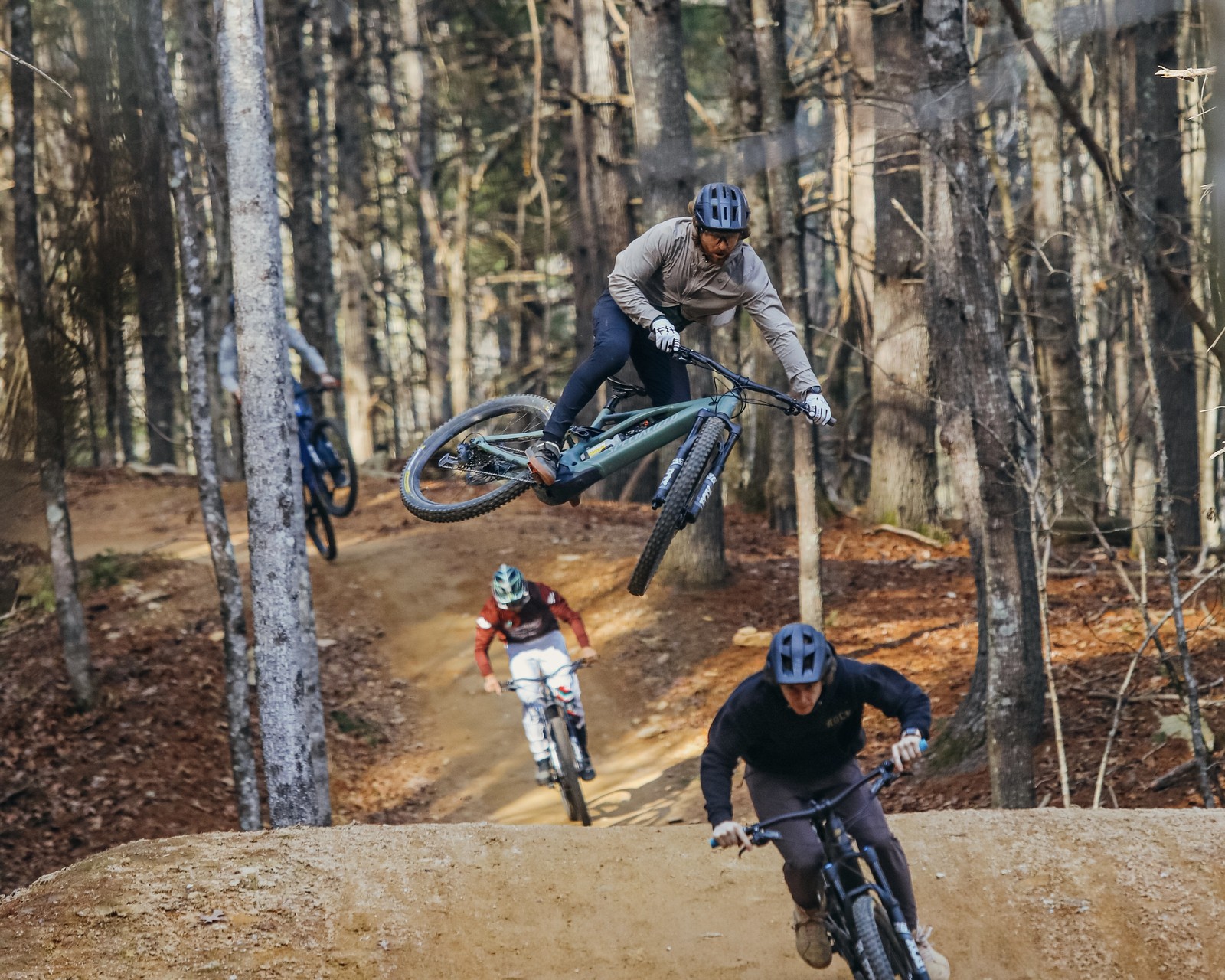
Days two and three were spent 30 minutes away at Ride Kanuga Bike Park. With a lot of bike park-style trails consisting of loose-over-hard pack conditions, it also had a bit more raw sections with flat corners and rocks. The trail speed at Ride Kanuga was slightly lower than Rock Creek. Regarding the soil content, Kanuga has a darker clay base with plenty of sand mixed in, making it ideal in wet conditions.
First Ride Impressions
Wild Enduro MS
The Wild Enduro MS is categorized as a mixed/soft terrain tire with a common-looking 3-2-2-3 tread pattern most comparable to a Maxxis Assegai. The tire is available in both 29x2.4 and 27.5x2.4 sizes, and we only tested the 29x2.4 version mounted up front on our Scott Genius ST.
- Designed for mixed terrain and soft terrain
- Folding bead
- 2x55 TPI casing with bead-to-bead shield and tread shield layers
- Pinch flat protection layer at the bead
- Magi-X compound
- Sizes: 29x2.4 and 27.5x2.4
- Available with Michelin blue/yellow graphics as well as with more stealth dark gray graphics
- Weights: 29x2.4 = 1,290g | 27.5x2.4 = 1,200g

The Enduro MS felt comfortable right from the get-go. The tire didn't feel too skinny or wide, the knobs didn't feel too tall or short, and the tire felt familiar to our usual front tire setup of a Maxxis Minion DHF or Assegai. We started out the day with a baseline front tire pressure of 26 psi. After doing a few runs and getting an initial feel for the tire, we decided to go down to 24 psi due to the casing feeling stiff and never folding when hitting corners or rocks/roots. With less pressure, we felt increased front wheel traction, particularly in off-camber or flat corners and chattery sections. We then bumped it down to 22 psi, where we began to notice the tire rolling on the bead in fast bike park turns, so we went back up to 23 psi. 23 psi was the sweet spot for us and was a good balance between grip, comfort, and confidence.
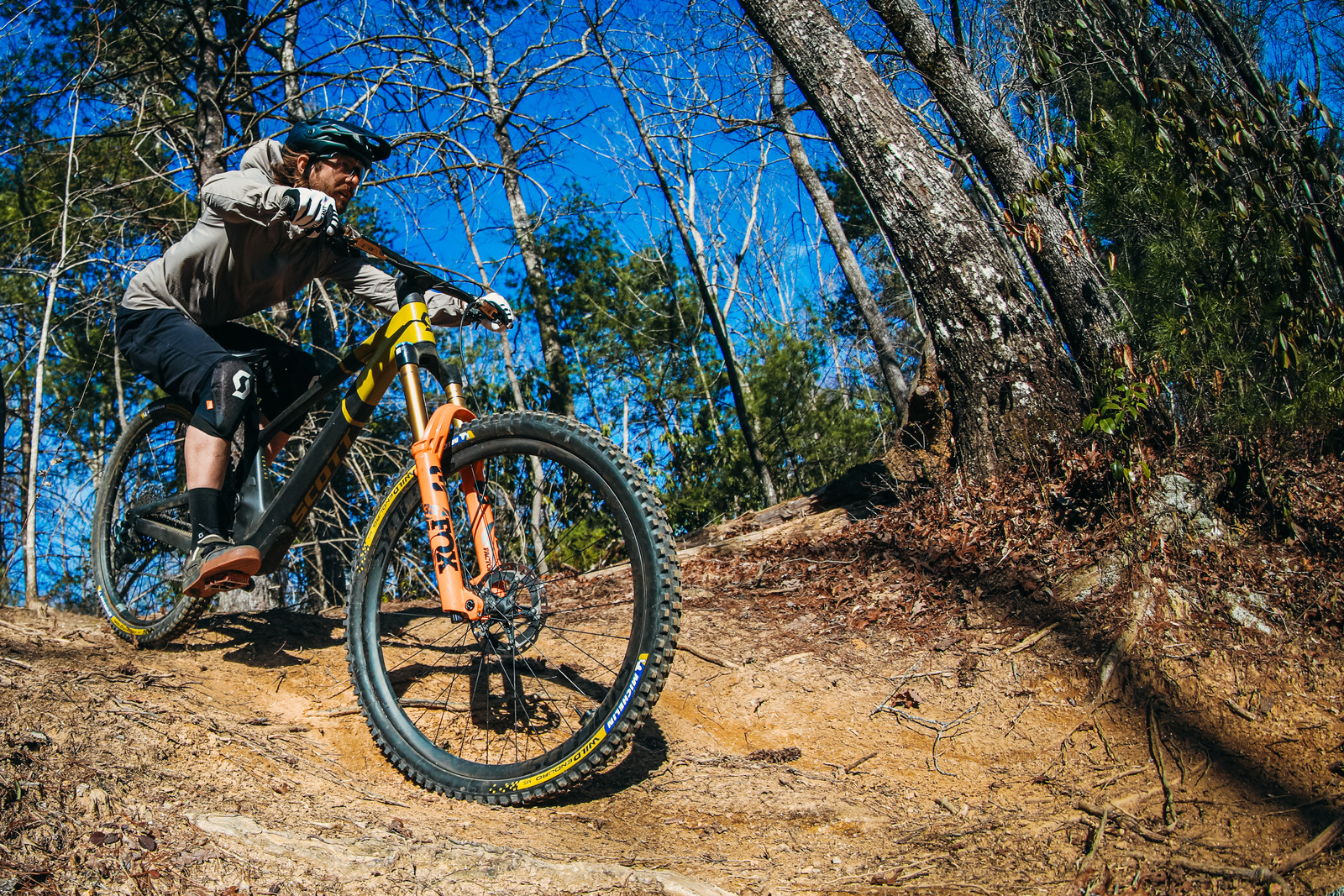
The biggest takeaway from the Enduro MS was how well the casing balanced stability and compliance. We didn't experience any major scares when it came to dinging rims on rocks or roots, even at 22 psi. At the same time, we never felt the tire deflect off roots, trail chatter, or rocks; instead, it seemed to work as more of a suspension component, keeping the wheels in a straight line and on the ground, not giving much negative feedback through our feet or hands. It was also very easy to feel the limits of traction when leaning the tire onto its side knobs.
Wild Enduro MH
Designed for mixed and hard-pack conditions, the Enduro MH uses a straightforward tread pattern comparable to a Maxxis Minion DHF. It's available in a 2.5-inch width for both 27.5 and 29-inch wheels. When we asked why they decided to make the MH wider than the MS, Michelin said they wanted to give it a larger footprint with more surface area and contact with the ground to allow for better grip in hardpack conditions. We mounted the Enduro MH in the rear of our Scott Genius ST.
- Designed for hard-packed and mixed-terrain
- Folding bead
- 2x55 TPI casing with bead-to-bead shield and tread shield layers
- Pinch flat protection layer at the bead
- Magi-X compound
- Sizes: 29x2.5 and 27.5x2.5
- Available with Michelin blue/yellow graphics as well as with more stealth dark gray graphics
- Weights: 29x2.5 = 1,335g | 27.5x2.5 = 1,300g
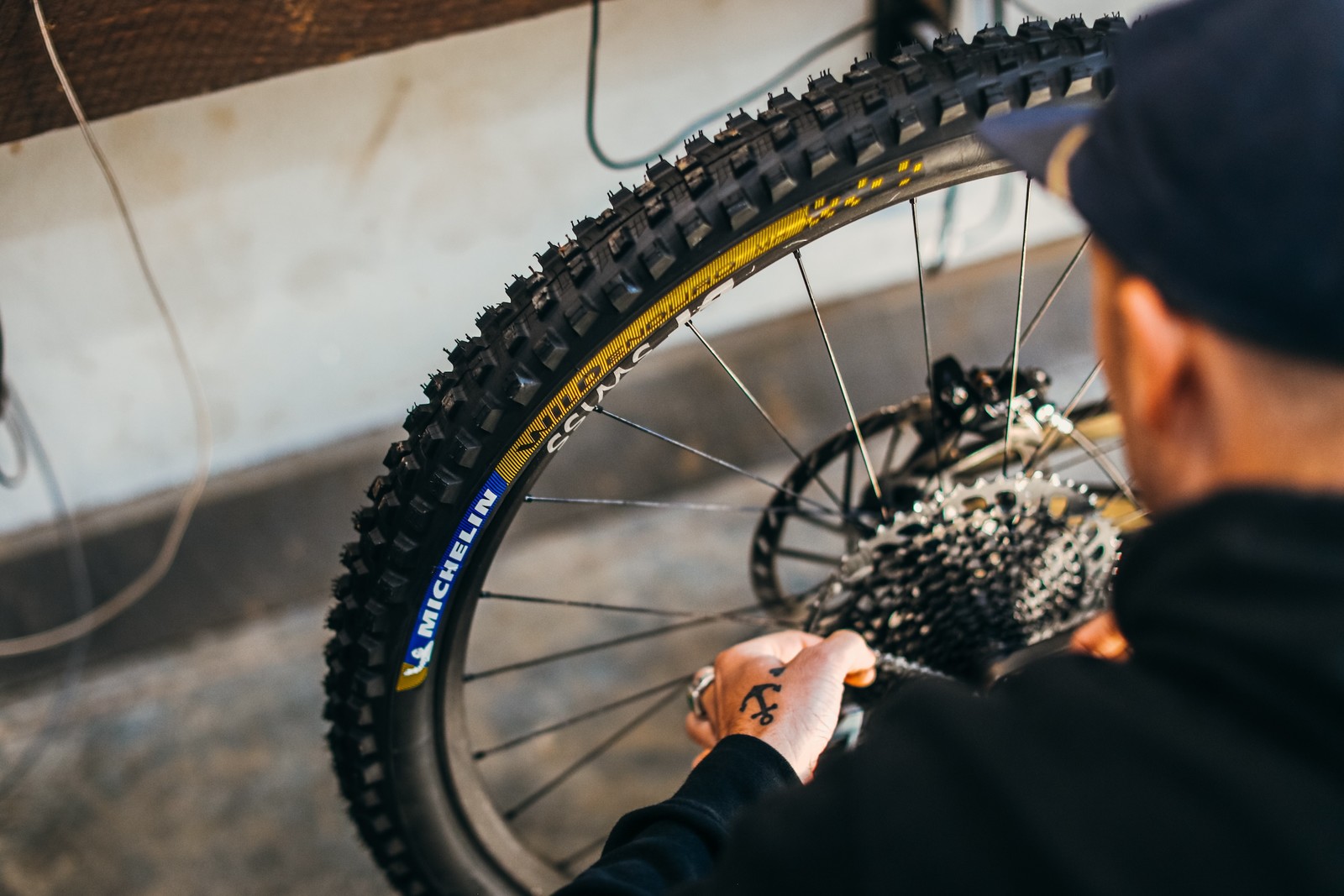
We began our test day with 27 psi in the rear, our base rear pressure for comparable casings like Maxxis' DoubleDown casing. Similarly to the Wild Enduro MS, we ended up lowering our pressure to allow the center knobs to dig in more and the tread pattern to flatten out on the trail. We settled on 25 psi and noticed the tire had much more grip in off-cambers and flat corners. We rode a couple more rocky trails at this pressure, where we surprisingly did not have any impacts to the rim, which made us confident that we could lower the pressure even more. Dropping pressure down to 23 psi was where we began to notice the tire rolling in bike park berms, and we ended up burping the tire in a corner and losing some sealant. We jumped back up to 24 psi, which gave the tire enough structure to keep from rolling on the rim.

After a few hours on this tire, we gained more and more confidence and experienced little to no hesitation on the trail. A couple of the main areas where this tire performed exceptionally well were in shallow ruts, roots, and braking traction. Like the Wild Enduro MS, the casing was noticeably supple but held shape well and did not deflect much off rocks or roots. The only downside to the Enduro MH was that it rolled slower. It wasn't detrimental to performance but didn't give us a sense of urgency when pumping rollers or downsides of landings.
E Wild Front
The E Wild Front builds upon the 3-2-2-3 tread pattern of the Wild Enduro MS. Michelin wanted to keep the look and feel between the tires consistent to make it easier for riders to know which tire to pick when jumping between their enduro and e-bike.
- Designed for mixed-terrain
- Folding bead
- 2x55 TPI casing with bead-to-bead shield and tread shield layers
- Pinch flat protection layer at the bead
- Magi-X compound
- Sizes: 29x2.6 and 29x2.4
- Only available with Michelin blue/yellow graphics
- Weight: 29x2.6 = 1,325g | 29x2.4 = 1,290g
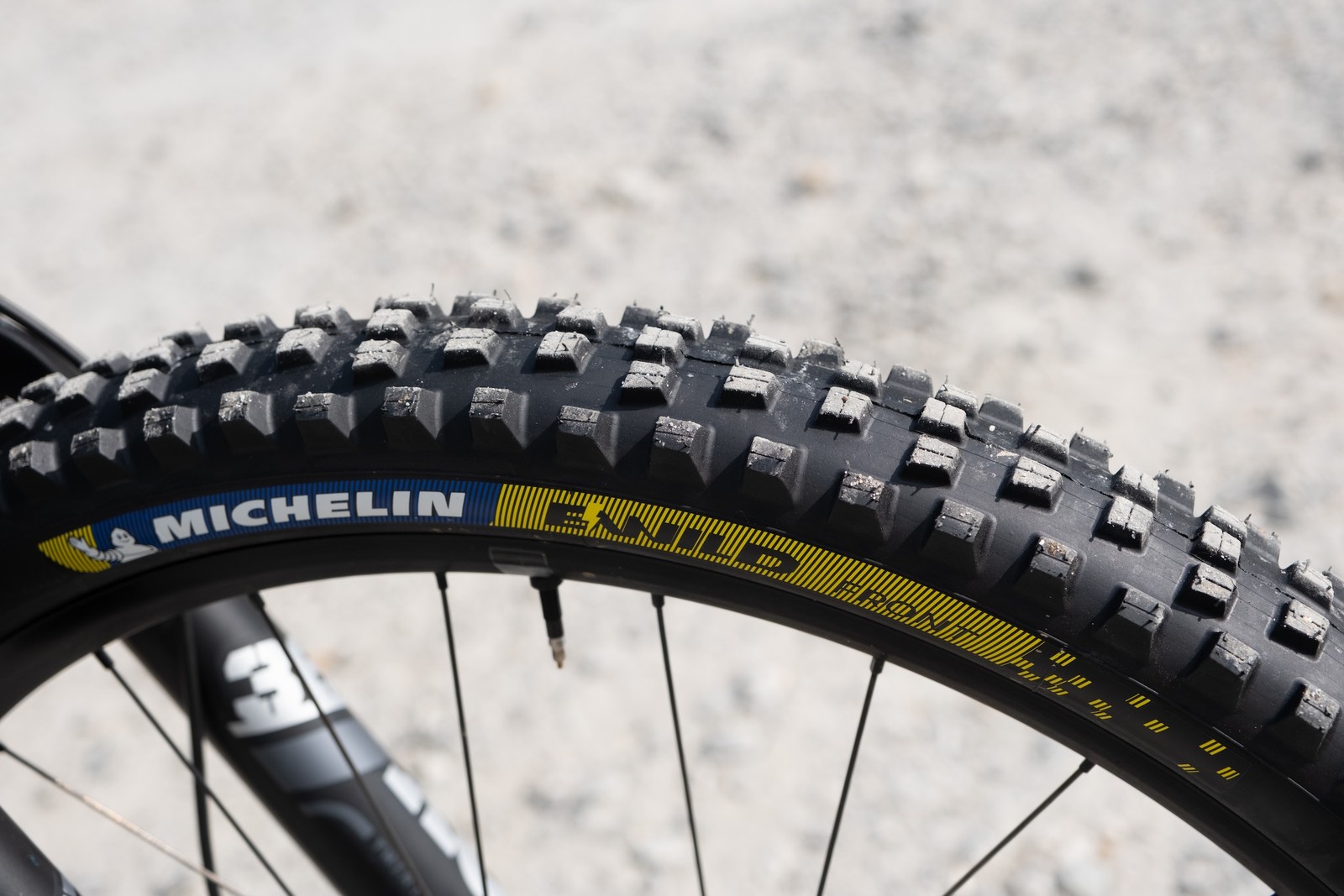
We began testing the E Wild Front with 26 psi, like we did the Wild Enduro MS. The first thing we noticed was the sheer width of this tire compared to the 2.4 we tested the day prior, as well as how fast it rolled. After getting acquainted with the tire, we knew we needed to lower our pressure because we had started to push the front end in flat and off-camber corners. We went down to 24 psi and noticed a dramatic increase in traction, and after a couple of runs, decided to go down to 23 psi, like we had on the Enduro Wild MS. At the end of the first day, we had a really good feel for how the E Wild front rode, and were impressed by its performance in mixed-over hard pack conditions, roots, and flat corners. Similar to the Wild Enduro MS tire, it was very easy to tell where traction ended when leaning on the side knobs.
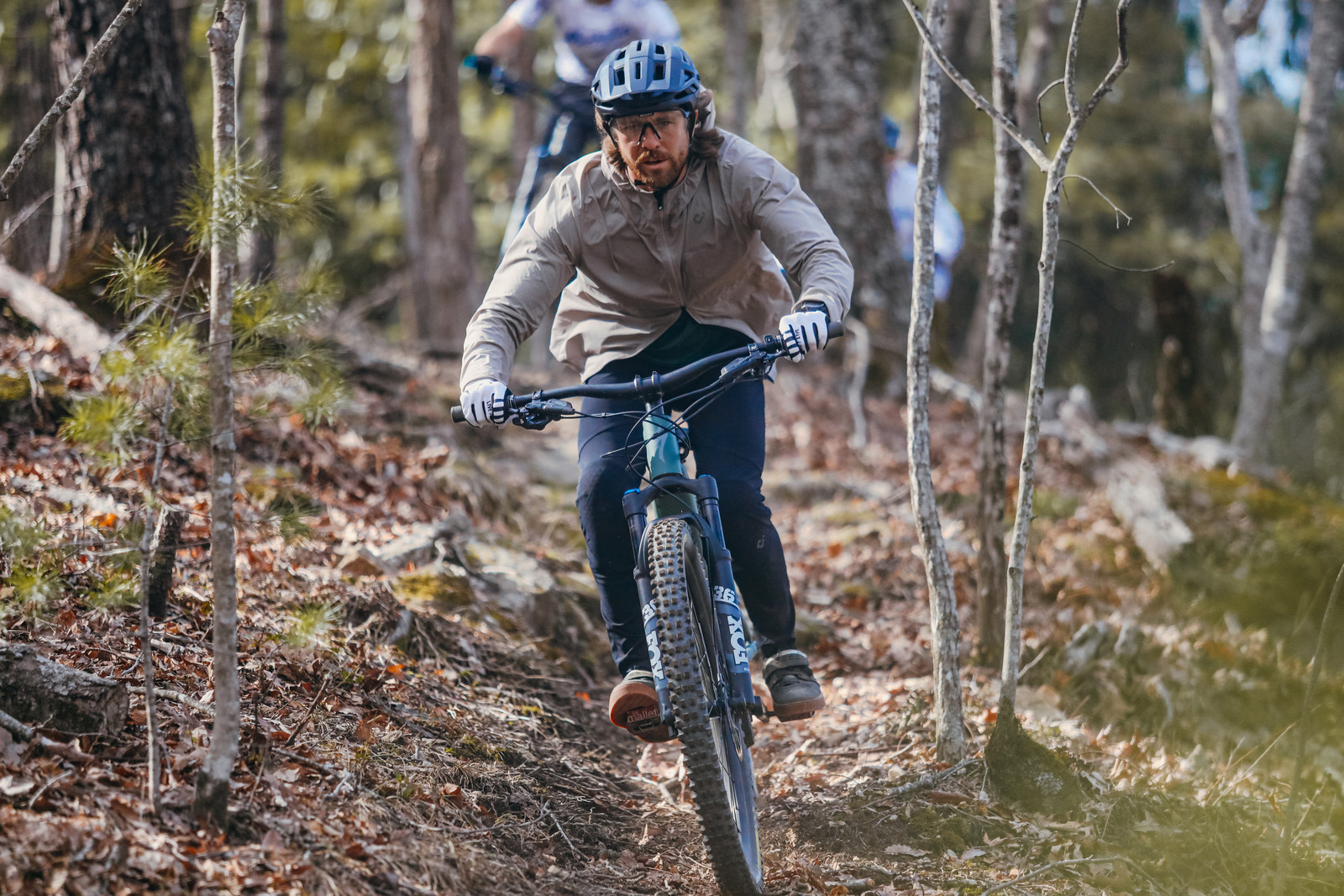
We were lucky enough to ride in a bit of mud and slop the following day, and even though the E Wild Front is not categorized as a mud tire, it did fairly well at shedding mud and maintaining grip over slippery hard-park conditions. After spending two days on the E Wild Front, we noticed it did not have as good of grip as the Wild Enduro MS. This could be due to a few things. First, the Magi-X compound is slightly firmer on the E Wild to help improve tire life. Second, the e-bike we rode had a Fox 38 with a GRIP damper, unlike our personal Scott Genius ST, which has a GRIP 2 damper that offers better initial stroke suppleness. We also would have liked to try the 2.4" version to see if the culprit was the width and tire shape of 2.6" being a tad more round than the 2.4 Wild Enduro MS we tested. Other than that, the tire still provided plenty of traction and comfort on the trails.
E Wild Rear
Completely new for this year, the E Wild Rear is specifically designed for climbing and rear wheel traction on e-bikes. The tread uses a staggered or off-set pattern to dig into the ground. It also shares the same side knobs as the E Wild Front, making it easy to judge when traction ends if you've already ridden the front-specific model.
- Designed for mixed-terrain
- Folding bead
- 2x55 TPI casing with bead-to-bead shield and tread shield layers
- Pinch flat protection layer at the bead
- Magi-X compound
- Sizes: 29x2.6 and 27.5x2.6
- Only available with Michelin blue/yellow graphics
- Weights: 29x2.6 = 1,325g | 27.5x2.6 = 1,245g
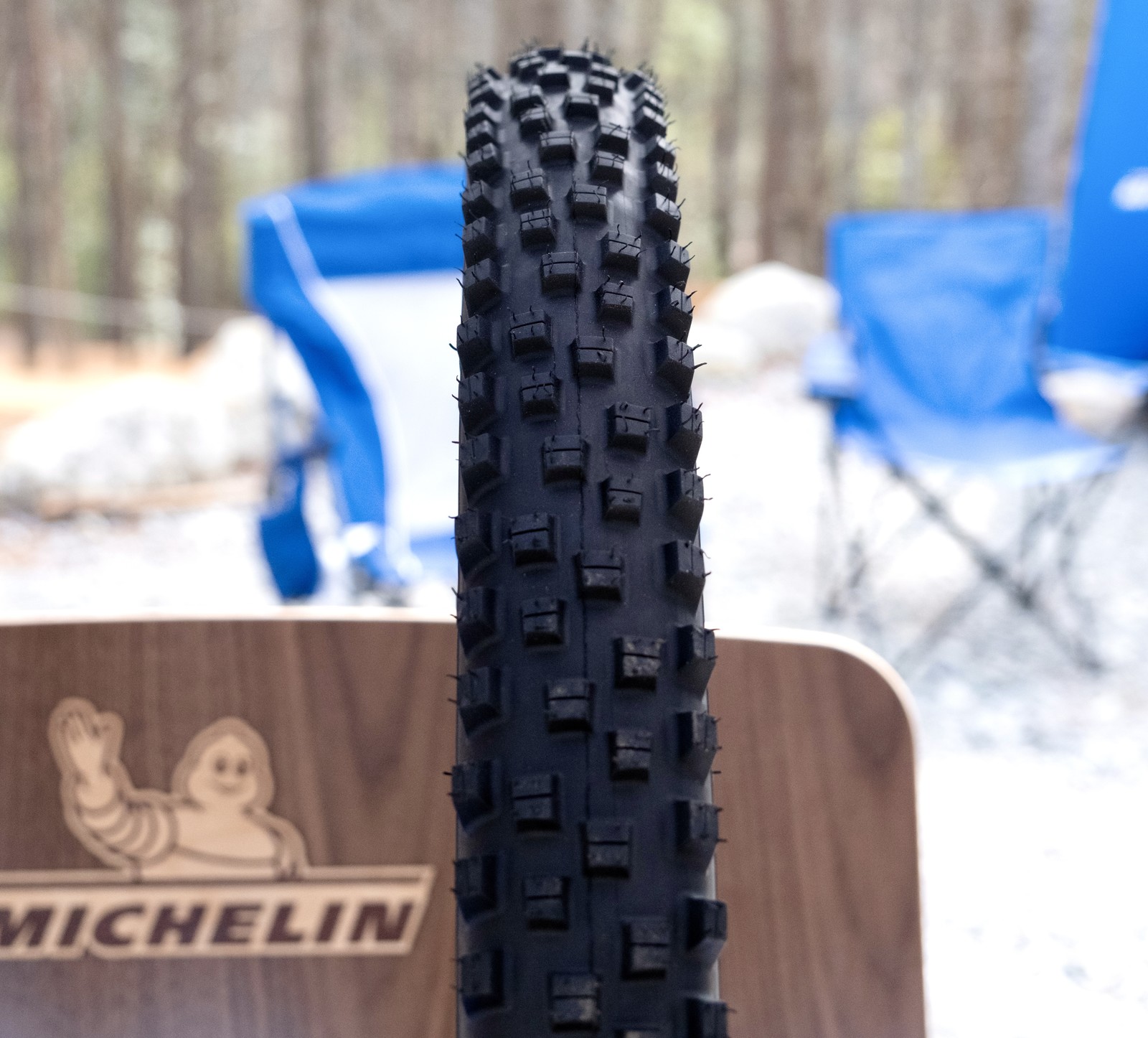
We started with 27 psi in the E Wild Rear and were surprised by its overall traction. After a day of riding and getting comfortable on the tire, we went down to 25 psi, which offered a nice balance of peak traction without allowing the tire to flex or burp on the rim. The tire definitely has an aggressive look that resembles a moto or mud tire more than a mountain bike tire. This was awesome for digging into the soil and finding grip in loose, mixed conditions. However, we noticed the larger center knobs folded slightly in bike park turns, and the tire did not roll exceptionally fast.
While climbing, we attempted a few technical sections to get a feel for how it would perform on sections similar to the "power" stages of the E-EDR World Cup races. To little surprise, the E Wild Rear provided us with ample traction, and we could tractor our way up just about any climb. However, when we got onto larger rock slabs, we did notice the taller, more spaced-out knobs being a little less effective for gaining traction.
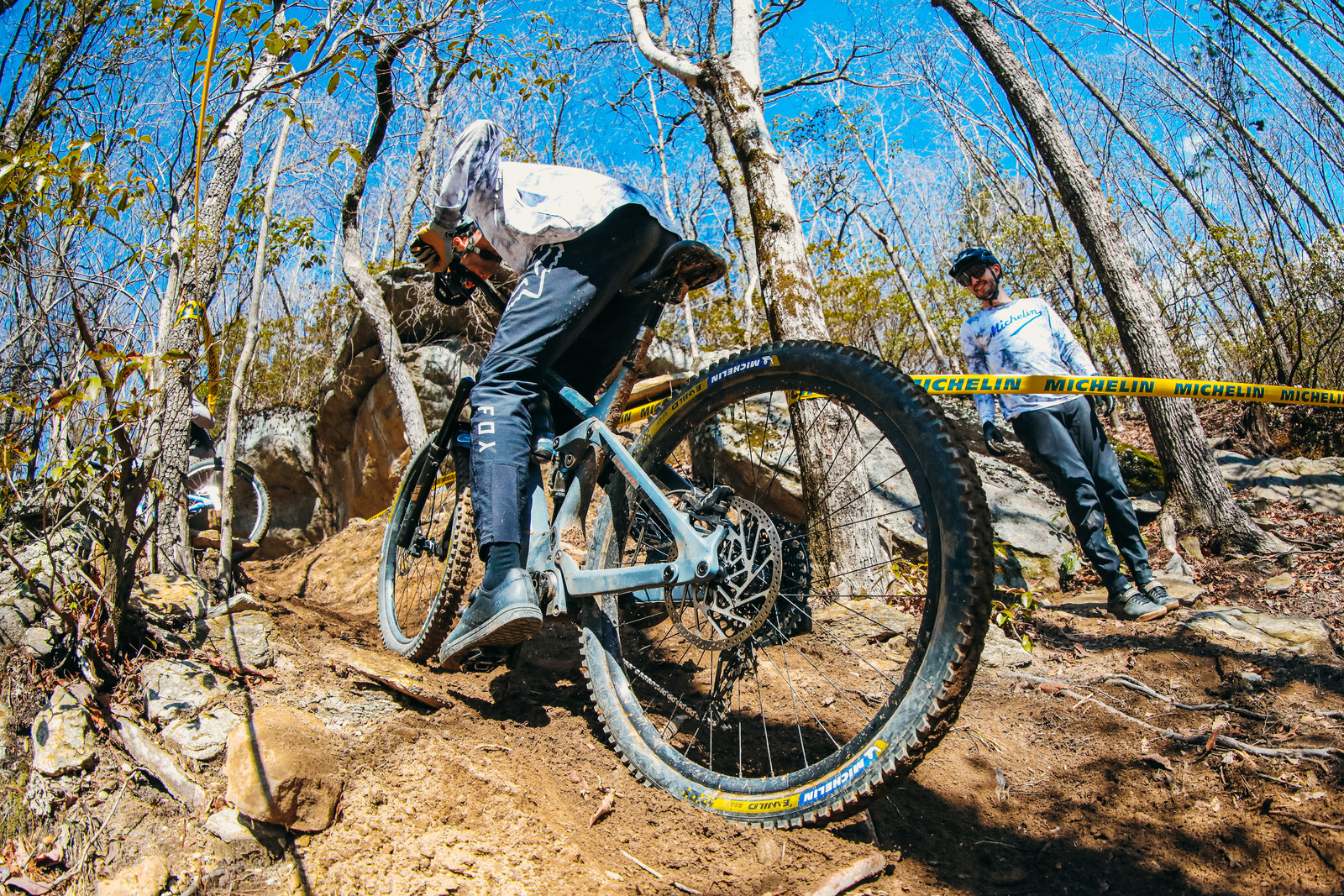
On the second day of testing, when conditions turned muddier, the E Wild Rear worked exceptionally well. It felt like we had endless control over the rear wheel and could confidently lean into corners without worrying about sliding out or doing a flat ground 360. Much like the other tires from Michelin, we rode, this tire was pretty solid in all areas; however, if we are going to be critical, we would have liked the E Wild Rear to roll a touch faster and for the center knobs to be slightly lower so that they wouldn't fold as much on hard pack.
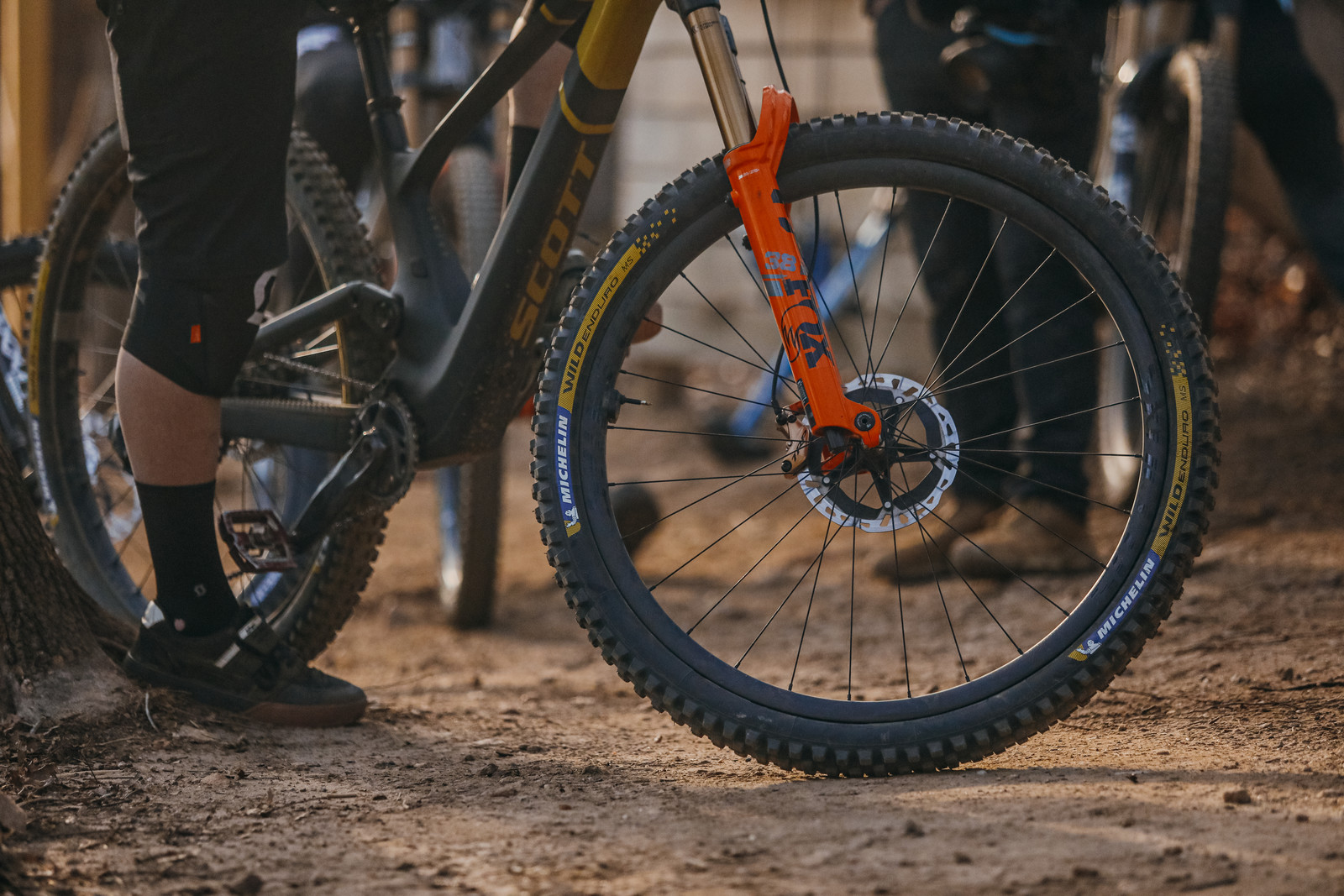
What's The Bottom Line?
Michelin has built a solid line of enduro and e-bike tires that are positioned to give other tire manufacturers a run for their money. The Wild Enduro tires outperformed our expectations based on our experience with the previous Wild AM2, offering great bite and hold over mixed soil with predictable cornering traction. We had minimal expectations before riding the e-bike tires, but it's clear Michelin put a lot of thought into ensuring they performed in unison with the way e-bikes are ridden. The standout takeaway from our three days of testing that's shared between all the Wild models is the support, comfort, and confidence provided by the latest casing structure. We could hop on each tire, tweak pressures, and then attack trails without worrying if the tires could manage the terrain.
If you're in the market for new enduro or e-bike tires, definitely give the Wild Enduro MS up front and Enduro MH in the rear. It may seem odd to run a wider tire in the rear, but it worked well for us and created a more balanced ride on the trail while providing confidence at higher speeds on rougher terrain.
For more information, please visit michelinman.com
View key specs, compare side by side, and review Michelin tires in the Product section.
About the Tester
Tanner Stephens - Age: 30 // Years Riding MTB: 18 // Height: 5'10" (178 cm) // Weight: 145-pounds (65.8kg)
Most known for winning a Pro US Downhill National on an old spray-painted bike, Tanner chased the dream of racing at the World Cup level for several years. Now working within corporate America, he keeps his hands in the bike industry through various creative outlets. He has developed a strong affection for suffering on long roads and mixed terrain rides and getting sketchy on an XC bike; however, he hasn't lost his love for smashing rocks, railing corners, and flowing jumps. A true student of mountain biking, Tanner has a strong love for downhill history and can be heard chatting about racing on Vital's B Practice Podcast.


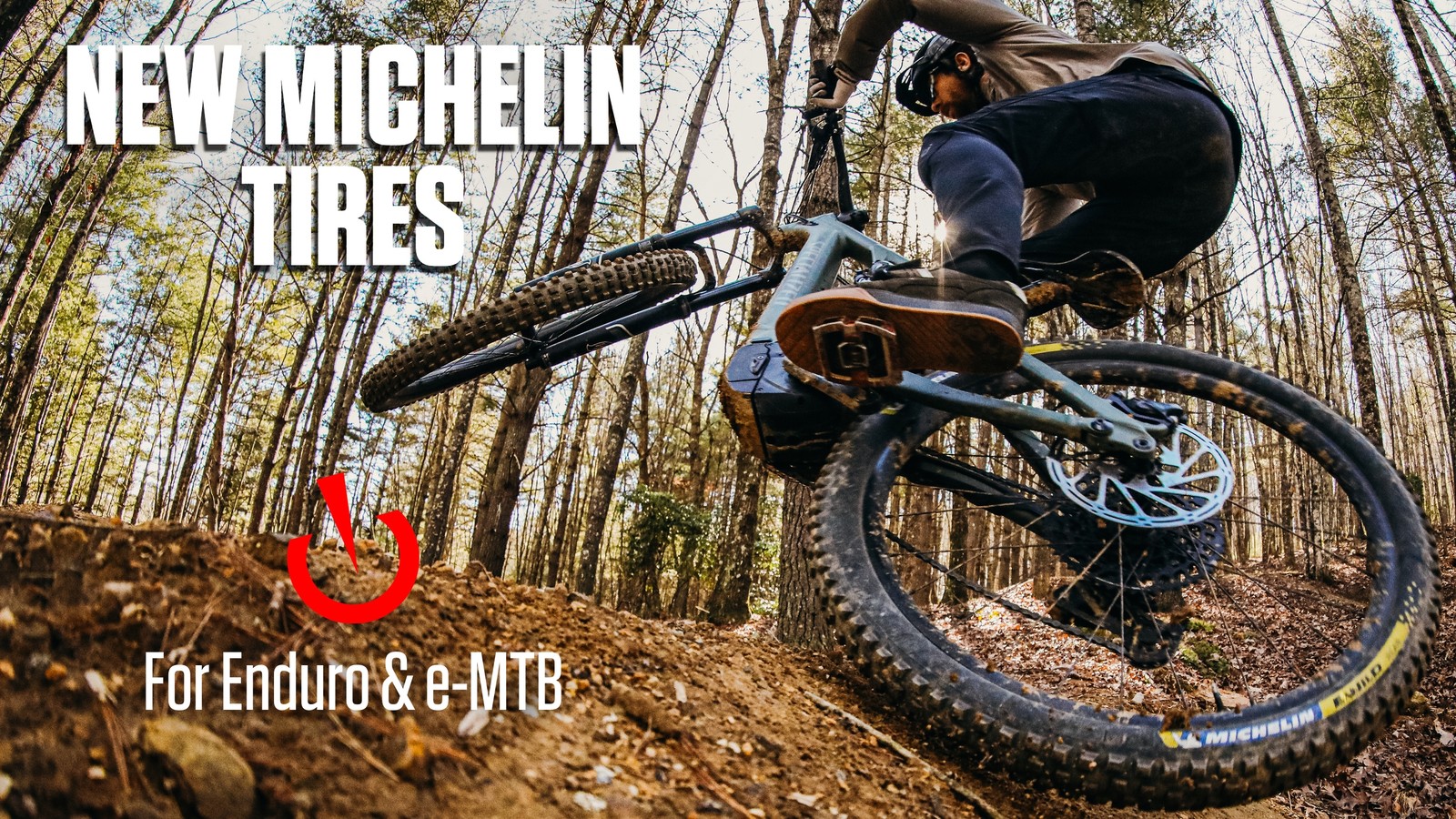




View replies to: Michelin Rolls Out New Racing Line Enduro and eMTB Tires
Comments